Optimizing a Formula for Open Plant Cleaning
Published
Published
Share
Exceptional hygiene in food and beverage manufacturing facilities’ production spaces is necessary to ensure high-quality and safe finished products. After production, all equipment and contact surfaces need to be cleaned and sanitized to meet the regulated, required levels of sanitation and cleanliness before a new production shift can start.Open Plant Cleaning (OPC) is the manual process of cleaning plant machines, walls, floors, and any other surfaces that come into contact with food and/or beverages. OPC is usually carried out with low-pressure foaming equipment. The cleaning foam is sprayed onto the surfaces, given time to dissolve the soil, and then rinsed off with water. An effective OPC solution has thick clinging foam and cleaning power for a range of difficult soils, even at low temperatures. This last point is critical because fats are more difficult to clean at temperatures below their melting point, and most food and beverage plants are kept at relatively low temperatures. Many of the cleaners found in the market have chlorine bleach in them, which is effective at cleaning soil but is corrosive to most surfaces in a plant.In designing an optimal OPC Formula, BASF sought to create a foam cleaner that outperforms benchmarks on fat and protein soils at low temperatures, is chlorine (bleach) free, generates stable foam, and does not corrode soft metal. We are excited to outline our experiment and share what we discovered during the process.
Strategically-built Formulas
We started by creating a range of formulas that consisted of varying levels of ingredients specifically chosen to optimize foam generation and stabilization; we created a complete and effective builder system that works well at lower temperatures with a relatively low level of caustic. We did this all without the use of bleach.
Foam Generation
For foam generation, we selected a blend of surfactants to work within the formulas including Texapon® N 70 NA, Glucopon® 225DK, Ammonyx® LO, and Deriphat® 160 C. The fourth ingredient, Deriphat 160 C, also has anti-corrosion properties.
Foam Stabilization
For foam stabilization, we used blends of Lupasol® PR 8515 and a fatty alcohol (C12-C16). The combination of these two ingredients creates a stable foam that allows for longer contact with the soil, and thus, better cleaning.
Builder System
The builder system consisted of KOH (45%), NaOH (50%), and Trilon® M Liquid T.
Cleaning Boost
Lutensol® TDA 9 was added as a non-ionic surfactant to boost the cleaning of oily soils. The level of Lutensol® TDA 9 was kept at 2%, to prevent the negative impact on foam.
Corrosion Inhibition
To keep the corrosion inhibition high, we formulated a high-performing chlorine-free product. Multifunctional ingredients such as Deriphat® 160 C and Lupasol® PR 8515 were used to further boost the corrosion inhibition.
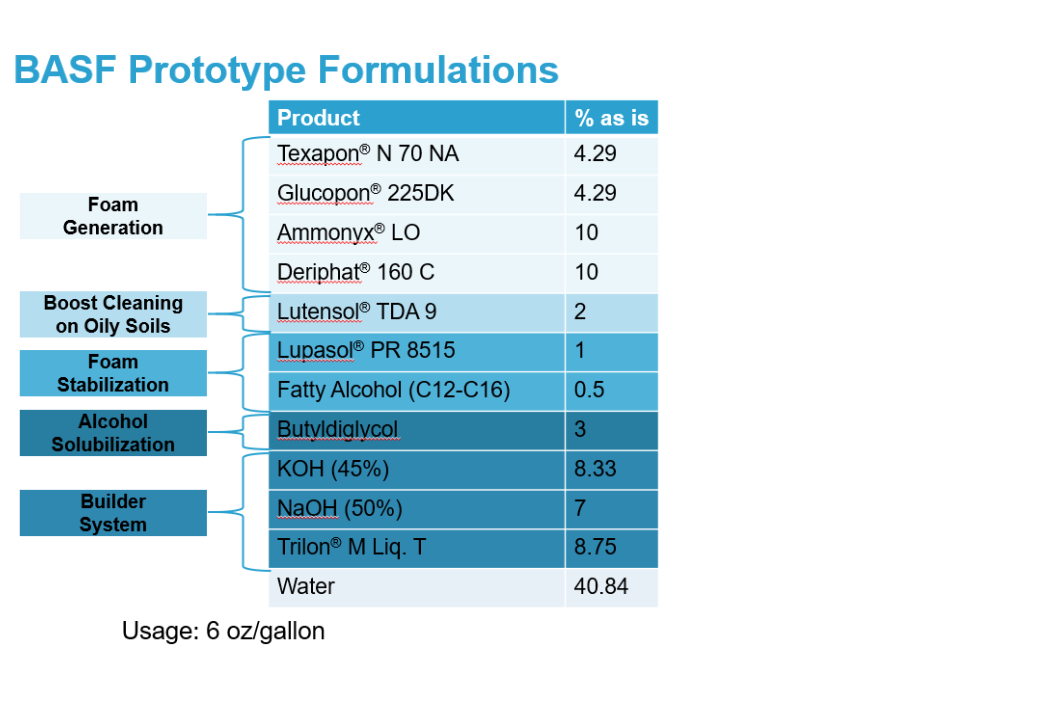
Cleaning Performance
To test the cleaning performance of the formulas, soiled aluminum panels were cleaned in a spray box, and cleaning was calculated gravimetrically. The benchmark was a chlorinated detergent with pH of 13.30.At a low temperature of 73 °F, used at a force of 60 pounds per square inch (PSI) for 20 seconds, the BASF Open Plant Cleaning Formulations were 15% more effective than a commercially available product (benchmark).This level of low-temperature performance is critical, as it is difficult to maintain water temperatures of greater than 100 °F in food and beverage processing facilities. Cleaning temperature drops even further as the water touches surfaces that are at or below freezing.
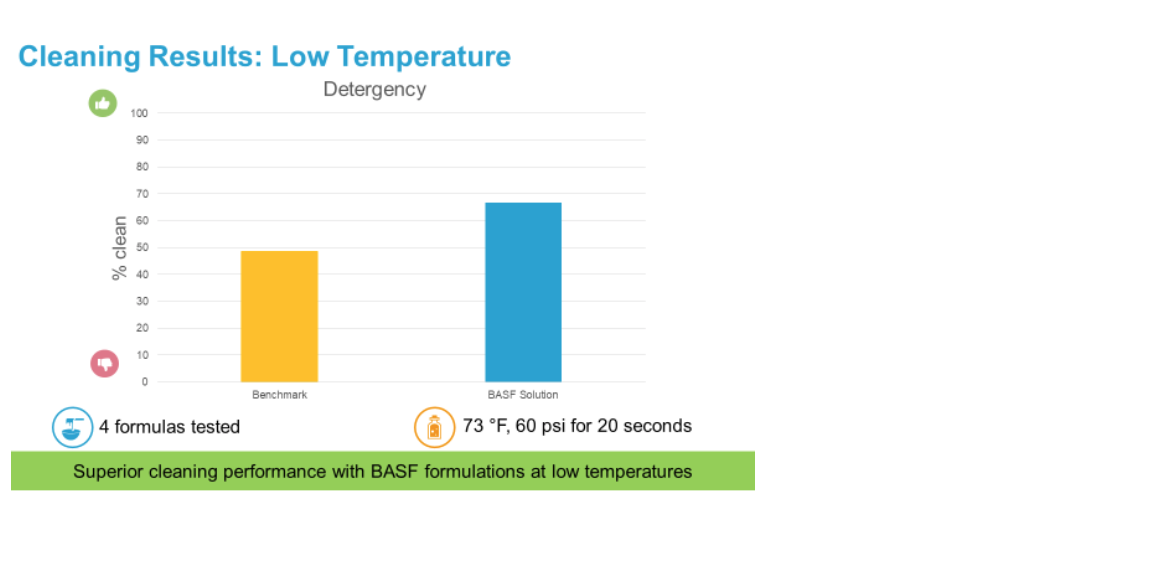
At a higher temperature of 105 °F, applied at a force of 60 PSI for 20 seconds, the BASF formulations produced similar cleaning results to those of the benchmark, without the use of chlorine or bleach.

Foam Performance
The BASF Open Plant Cleaner formulations produced higher and more stable foam than the benchmark when measured at 30 seconds, 600 seconds, and 800 seconds.
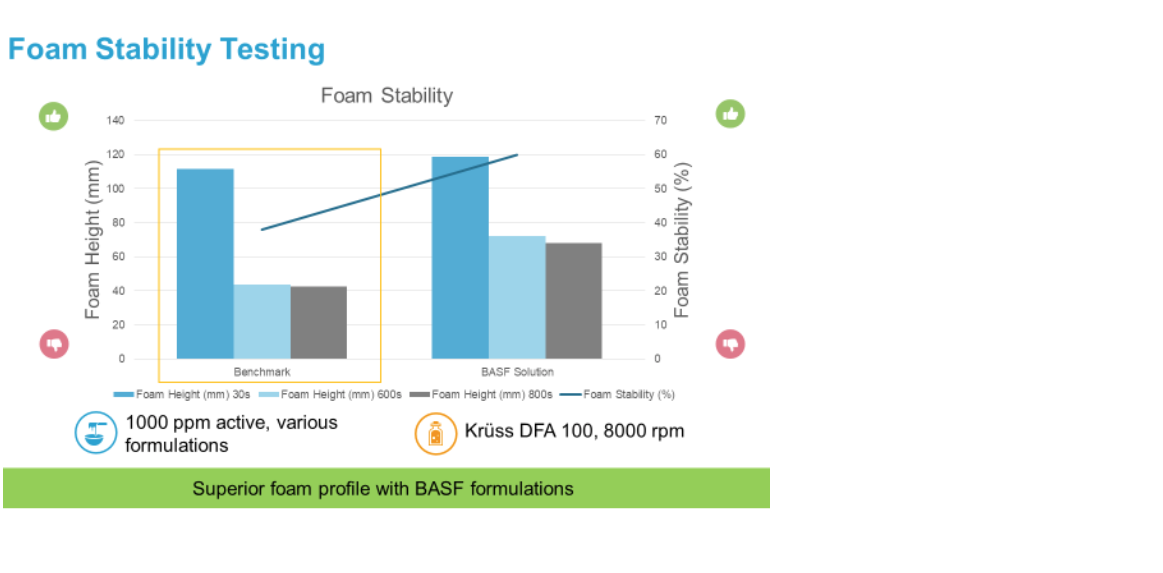
Corrosion Performance
To test the corrosion present with each of the formulas, we placed various soft metal alloys in 6oz/gallon solutions of the formulas, and tracked weight loss, density, area, and exposure, to calculate corrosion in millimeters per year.On aluminum alloy (Al 6063), the BASF solution produced less corrosion than the benchmark.
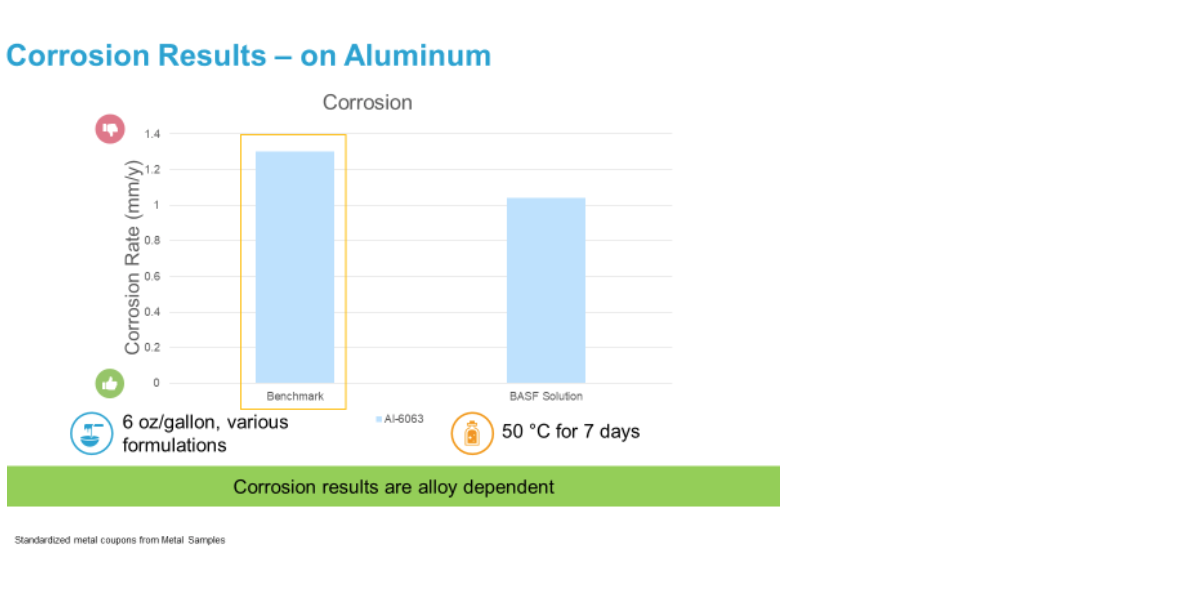
On stainless steel, the BASF solution performed significantly better than the benchmark in terms of delivering low-corrosive effects.
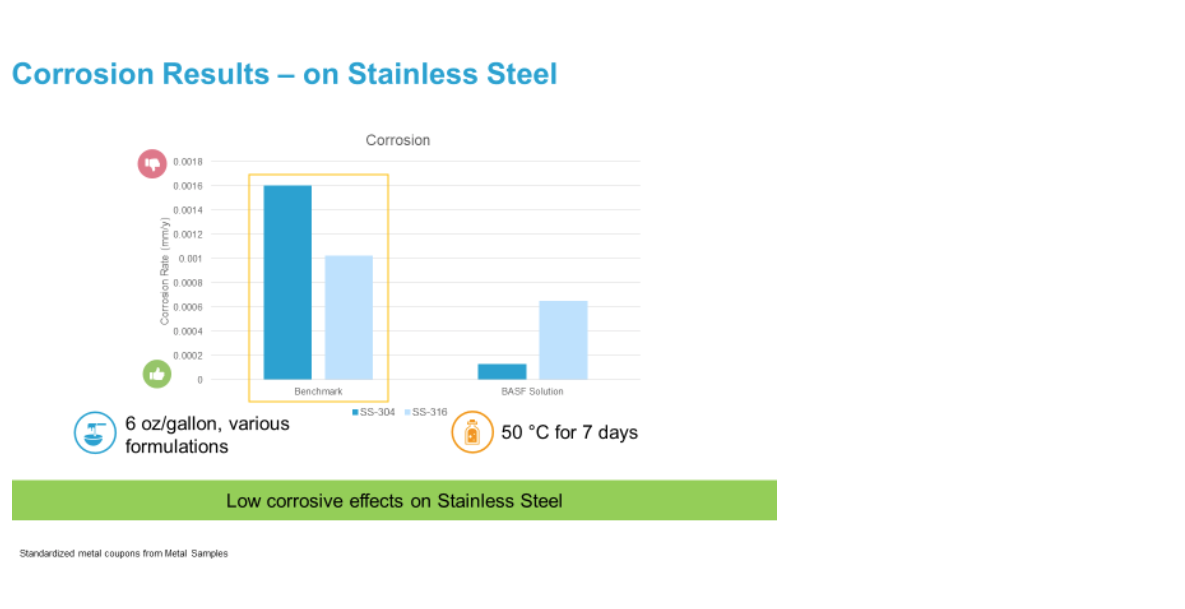
Conclusion
The BASF Open Plant Cleaner formulas were able to outperform the benchmark in terms of low-temperature cleaning, optimal foam production, and anti-corrosion properties. The BASF solution provided superior cleaning results as it performed the best at both low and high temperature cleaning, had low corrosive effects on various metal alloys, and produced good foam stability. All of this was achieved without the use of chlorine.Finding the optimal formula is beneficial, but, more importantly, this experiment proves that there are many innovative solutions available to approach improvements in open plant cleaning. From reducing caustic and minimizing the use of expensive ingredients, to lowering cleaning temperatures and improving foam performance, the solution lies in a creative approach and a wide range of well-studied ingredients.








